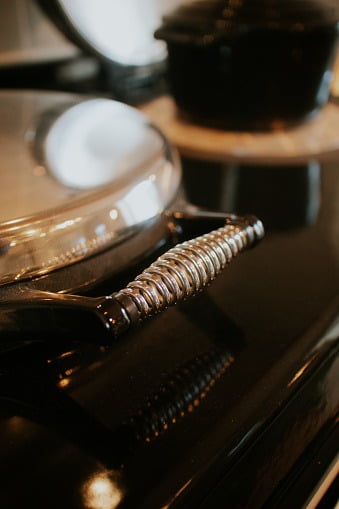When you renovate or are building a new home, one of the considerations you need to make is what type of cooker installation you want, and there are indeed a lot of different options when it comes to ranges.
There are traditional gas ovens and ranges, electrically heated hobs and more elaborate systems such as induction hobs.
However, a popular alternative, albeit one that has become increasingly controversial, is the reliable, dependable AGA cooker. One that combines hot plates, ovens and a heater into one all-in-one unit.
The reason why it is so controversial is partly due to the cost, and partly due to the fact that you need a certain type of house to truly benefit from it.
- What Is An AGA Cooker?
An AGA, short for “Aktiebolaget Gasaccumulator” is a Swedish designed all-in-one cooker designed initially to burn solid fuels before being adapted to use natural gas based on the idea of heat storage.
Its creator, Gustaf Dalén, was blinded by an explosion whilst experimenting with a gas storage substrate called Agamassan, and wanted to create a system that would help his wife and primary carer when she was cooking.
Effectively, how it traditionally worked is through a central burner unit, which provided radiant heat to the multiple ovens (as many as five) and hot plates which offer boiling and simmering functions.
The burner itself also acts as a radiant heater, warming up the kitchen and most of the house.
Traditionally there was a specific simmering and boiling plate, but modern AGAs provide more flexibility, allowing for different functions to be turned on and off like a more traditional cooker unit.
- Positives And Negatives
It is impossible to talk about the AGA without talking about the intense levels of heat it generates and the amount of gas it uses, because exactly how positive or negative the AGA’s unique qualities are dependant almost entirely on the layout of your home.
AGAs traditionally used a lot of energy, suggesting that they used as much as 60 litres of propane gas per week, 38 times as much as a standard gas oven or hob, as much gas in a week as a gas range would use in nine months.
Context is necessary when exploring these figures however, as an AGA is commonly used as a replacement for a central heating system, especially in a lot of traditional country homes where the kitchen is located near the centre of the house.
In this context, the AGA is used as a replacement for heating systems, dryers, kettles, toasters and most other cooking utensils when it is on, which in some cases can save energy for people who minimise their use of other electrical appliances
As well as this, most AGAs running today can be switched on and off, vastly reducing their energy use.
Alongside this, the build quality and longevity of AGAs are legendary, with some cookers lasting well over 75 years, due to their ease of use, robust cast-iron construction and relative simplicity.
As a result, whether an AGA is worth getting will largely depend on the type of home you have, as either, it will serve as a replacement for several appliances at once or be a complete waste depending on where it is located.

